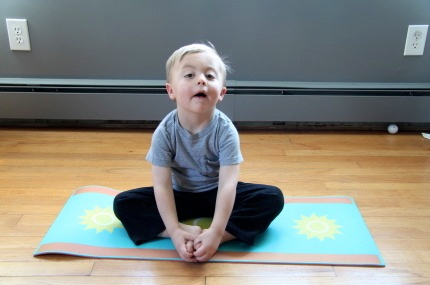Children with special needs are different, so is their medium of expression. We are all aggressive in some ways – it’s only human. But the manifestation of aggression in special needs populations in itself brings an altogether different set of problems.
Aggression in special needs children differs in its strength depending upon the child’s concerns. But regardless of its severity, it is always a difficult emotion to handle.
In children, the way in which they express their anger mainly depends on their developmental age. Here, we differentiate between very young children ( 3 – 6 years), young children ( 6 – 11 years) and adolescents (12 – 16 years).
We then discuss the causes and strategies to help tackle this problematic emotion in each of these age groups.
Identify the roots and triggers of aggression
Sudden changes in your child’s behavior will always have some causes. If your little one has been acting unruly or has been having frequent anger outbursts lately, it is a red flag. No, freaking out is not the first thing to do. You should dig up and look for the specific triggers and changes that the child is going through.
Aggression in special needs children, or children in general, could simply be a natural process of growing up. Many things around kids change as their age multiplies. These changes may include:
Physical changes:
Changes within the body, hormonal or physical. these can sometimes be a significant source of stress. Remember how painful it used to be when our milk teeth used to fall off?
Social changes:
Changes in a child’s peer relationships, in their academics, in their understanding of things may pool up to be overwhelming and lead to frustration.
Environmental changes:
Modifications in their classroom setting as they pass out from one grade to another can get extremely difficult for the child to adapt to. Knowing that their favorite teacher will no longer be teaching them or that their friend is in another division, may lead to an outburst.
For special needs children, even a minor change can bring immense dissatisfaction if they are not able to verbally express how they feel about the change. Knowing that they can no longer fit into their favorite night suit can also be a potential trigger.
Such kids are especially sensitive to changes in parent and peer relationships.
Therefore, it is important for parents and caregivers to be sensitive to their needs at such times.
Other common causes of aggression in special needs children include:
1.Communication issues, sensory problems, frustration or just not getting what one wants.
2.Aggression could also be a result of built up emotion and resentment in kids.
3.Children may also act out in aggressive ways only to seek attention.
4.Low self esteem or low confidence.
5. Passive aggression:
This includes subtle forms of aggression. When your child is acting stubborn, or regularly exhibits resistance to your requests or demands, s(he) may be expressing passive aggression. Technically, it is when your child finds an outlet to their built up emotions in acting out to you.
Strategies to deal with aggression and unruly behavior
For very young children (3 – 6 years old)
Caution: For children so young, DO NOT use any coercive methods. Yelling at the child or punishing him for being aggressive will only enrage him further. Threats and abusive language at this age can settle into the child’s mind and aggravate his/her problems.
Behavior modification techniques:

Methods we use to gradually work on the child’s specific aggressive behaviors. These techniques are the most effective with children so young.
Positive reinforcements –
Which means rewarding them for an appropriate behavior. These immediate rewards help a great deal. So if your child loves music, tell him, ” If you do not hit others in class, I will give you 5 minutes of music time”. This will motivate him to get the reward and not engage in hitting behavior.
Token Economy techniques –
Token economy for dealing with aggression in special needs children is to develop a relatively long term plan with the child. Once s(he) learns ways to work with their anger on an immediate basis, the child is asked to continue trying to control his/her anger outbursts for say, a week to get a reward. Tokens given throughout the week for specific instances of anger control could be anything, from sticker stars to smileys. The idea is, if the child manages to collect all the tokens, s(he) will be rewarded with the desirable reward at the end of the week.

However, such token economy techniques should be used with necessary cautions. Use of behavior modification charts will help the child understand the idea easily. Giving the promised rewards on time is equally essential. This will get the child to develop faith in your system. Remember to wean the rewards off once the behavior is learnt.
In summary, first make the child understand that a particular act/behavior s(he) does when angry is wrong. Next, help the child learn an alternative way to channelize their resentment. Example, point to a sad smiley instead of crying out loud or squishing a sponge ball.
Tell the child ‘what to do’ instead of only telling them ‘what not to do’. So when telling them to not run out of the class midway, tell them that sitting in class and paying attention is what needs to be done. Reward them for the same to have them do it continuously till it becomes a habit.
For Young Children ( 6 – 11 years old):
Caution: Understand that this is the age where most things change, both within the child and in the environment. It is at this age that aggressive outbursts or tantrums in children are most common. Not traumatizing the child by being too harsh (physically or verbally) is of utmost importance. Remember, children never learn from people they don’t like.
Understand the triggers –
Most special needs children are sensitive to something or the other. Sensitivity to loud noises, screams, bright colors or even the clicking of a pen could provoke the child. Just about anything could be a potential trigger for their aggression. Understanding what causes the outbursts and work to move them away from the child.
Root causes –
If the child acts out aggressively in response to low self esteem, for example, tackling the issue of low esteem will ultimately reduce aggression levels. Parents could better be able to point out such root concerns. There could be causes deeply entrenched in the kid to which s(he) may respond by being stubborn because they don’t know how to handle those. Observation will tell you what is it that needs to be resolved first.
Take another example: If the child was locked up in a dark room alone when young, there are chances that s(he) will become deeply fearful to being alone in a closed space. So the next time the child is left all by himself in a room, s(he) may become so anxious that s(he) starts yelling and crying and kicking things around.
Aggression, here, will disperse as soon as the child is helped to deal with the fearful memory.
Testing –
Aggression, as a trait, could also be inherited or genetic. A special needs child could have a co-morbid hyper-aggression, mood disorders, IED, impulsiveness etc. Getting a child clinically evaluated to identify these co-occurring conditions will help you deal better with their aggressive tendencies. Getting therapy and professional counseling services helps a great deal.
Physical activities –

Behavior modification techniques (discussed above) can also be used with children in this age group. Along with them, since kids here are older, one could also use calming meditative and physical exercises to burn off their bubbling energy.
Traditional yoga and meditation is sometimes boring to us as well, admit it. This is why, you need to get your thinking caps on and make them interesting for your child.
There are a number of YouTube channels that may help. Art therapy activities, story yoga routines etc. can all get you child moving without them even realizing that they’re exercising. Do a bit of internet surfing and you can pick and choose what suits your little one’s needs.
For adolescents (12 – 16 years old)
Caution: Kids in this age group are no more ‘kids’. They understand that there is something ‘different’ in them. Aggression in such older children could simply be a result of this understanding. People look at them differently, they need to go for several therapy sessions unlike their friends etc. can all create a feeling of inadequacy in their self perception. Therapy and remedial sessions catering to their specific needs are crucial. But do not make your adolescent feel like s(he) is ‘less’ than others. Treat them like any other child, do not be too harsh with them and let them grow at their own pace.
Conditioning –
Along with Behavior Modification, Token Economy and Reinforcements, Conditioning can particularly help. Technically, conditioning is pairing up a neutral stimulus with another stimulus repeatedly so the neutral stimulus itself becomes capable of eliciting a response. POOF! Too complicated.
Take an example: Make a red flag and a green flag. Every time your child starts hitting and shouting out of his temper, show him the red flag immediately. The red flag signifies that the behavior is wrong. Over time, your child will associate the red flag with unwanted actions and will calm down soon as he sees the flag. Thus, the red flag can then be used right away when you notice him starting to bubble up out of anger, signaling him to relax and not act out.
Pair this up with desired reinforcements for the child to feel appreciated to not act out.
Expressive strategies –
Art and play therapy are effective mediums of self expression.
Every color has a different effect and meaning. Explain it to your child, give him a black sheet of paper and ask him to paint his emotions. Or to paint his strengths and weakness, a perfect day, or just let it flow. This can provide an effective way to vent his emotions out. They will use all the black and brown shades on days they’re angry. And all warm colors like yellow, red when they are happy.

Play therapy techniques, like writing up a bad memory on an air balloon and letting it go, also provide a channel for letting suppressed feelings out. Of course, for children with special needs, it is important to first have them understand the logic and idea behind such techniques for them to be effective.
Conclusion
Aggression in special needs children is critical. Dealing with it is all the more difficult. But it is extremely vital to tackle it. For our ultimate goal, usually, is to make the child functional and independent. Aggression, if it is a learnt behavior, is surely treatable. If it is a condition in itself, professional treatment therapies should be brought into practice.
We, at Starlit Ability Enhancement Services, use these techniques and many other ways to help special needs kids deal effectively with their concerns. To know more about our services, visit www.starlitservices.com or call +91-9167240056


My daughter Age 25 years is suffering from aggressive behaviour pl let me know solutions.